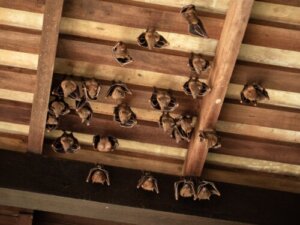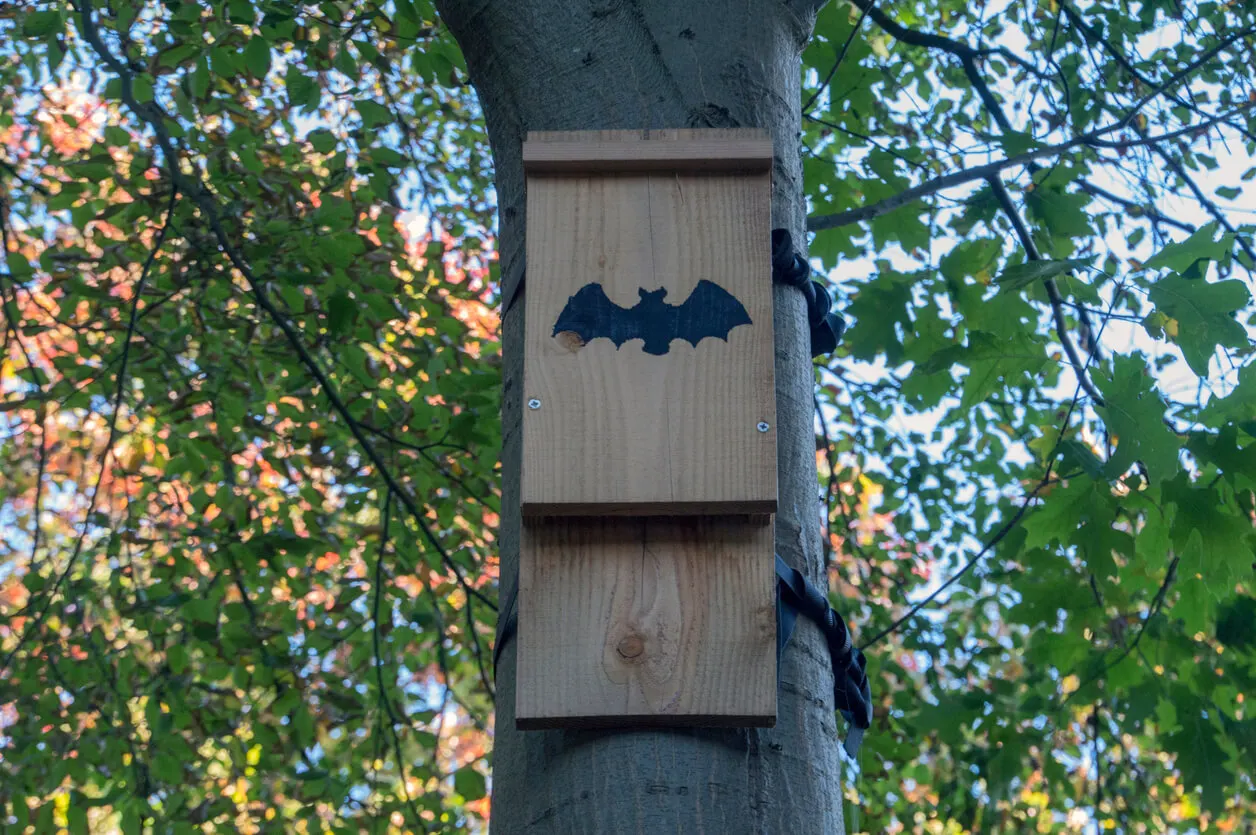4 Tips to Scare Bats Away from Your House

It goes without saying that bats are such peculiar creatures, that they generate a very strong rejection in most people. Even if you are among those who love all kinds of animals, you will surely want to keep them away from your home. We want to share with you some tips on how to scare bats away from the house to bring safety to your family.
These mammals transmit diseases to humans, such as rabies. For this reason, it’s essential that you get rid of any bats that may be around or inside your home.
How do you know if there is a bat infestation in your home?
The most obvious way to know if your home is infested with bats is if you can see them flying over your property. However, they are not always visible to humans, especially because of their nocturnal habits.
There are other signs that are indicative. For example, if you notice guano or droppings on walls, ceilings, or roofs. Another indication of the presence of these animals is hearing bird sounds, but at night.
Also, if you notice black spots on holes or small windows, you may also suspect their presence. Once you have almost confirmation, ideally you should do a daytime inspection for missing shingles or holes in roofs.
We think you may be interested in reading this, too: Plants, Care, and Tips to Start a Butterfly Garden at Home
The best tips to scare bats away from the house
Despite the negative connotations that bats generate, in general terms, they are not aggressive toward people. They are animals that prefer darkness and warm places, so ceilings, attics, and the like are their favorite places to settle.
In this context, the presence of bats in a house can generate bad odor, wear of structures, and allergies to people due to the accumulation of guano. So, let’s take a look at some ways to scare bats away from home, but without exterminating them.

1. Liquid repellents
The idea of these products is not to kill the bats, but to make the place where they live as inhospitable as possible. They are repelled by the smell and taste of these types of liquids.
You can buy them in spray form and spray them all over the area where they are installed. You have to apply it at night, once the bats have left their nest, and continue to do so for a month or so.
2. Ultrasonic repellents
These are devices that emit high-frequency sounds, imperceptible to the human ear, but that cause discomfort to bats. This is because they interfere with the echolocation system used by these animals to move in the dark.
They have motion sensors. Therefore, they are automatically activated when they detect animals flying within the coverage area.
3. Glowing objects
Bats are frightened by the presence of glowing objects. You could put up shiny Christmas decorations to discourage bats from entering your home.
Mirrors also work for this purpose. If none of this works for you, then the suggestion is to illuminate as best you can the area they have chosen to rest.
4. Strong scents
These animals escape strong scents and the most effective one is eucalyptus. If you place concentrated oil of this fragrance in the access areas, you will be able to scare them away naturally. Likewise, naphthalene is another repellent that will give you very good results, although it’s toxic for people and pets.

Like this article? You may also like to read: Spring is Here! Plant These 8 Bulbs in Your Garden to Fill it with Life and Color
How to prevent bats in your home
Whether you’ve had bats living in your home or not, it’s important to know how to prevent them from choosing your property to roost in. We know that they prefer older homes and need a place to enter. That is, you should cover or seal all holes in walls, windows, and roofs.
Another point to keep in mind is that they settle in solitary and dark places, which people do not access on a daily basis. They can be attics, attics, basements, and any forgotten corner. We recommend that you ventilate these spaces from time to time.
Exclusion devices are another method of keeping bats out of your home. Once you have eradicated them, you need to place these devices in the holes where they used to enter. Because if there are any left, they will be able to leave, but not enter again.
Finally, when you are sure that there are none left, it’s time to thoroughly clean the area where they were located. Try to use protective gear, such as long gloves, rubber boots, and masks.
We believe that for this task, the ideal would be to hire a specialized cleaning service.
Seek professional help to keep bats away from your home
Bats are not considered a pest, therefore, it’s not legal to exterminate them. In fact, they contribute to the maintenance of wooded areas by pollinating seeds. They also control pests in agriculture, because they feed on insects.
The advice we have shared with you applies to mild cases, in which the presence of bats is minimal and a true colony has not yet formed. For a bat infestation, it’s best to hire the services of a professional to take care of the matter.
We hope you don’t have to go through the task of eradicating bats from your home. But if you have no other alternative, use one of these tools that we tell you about.
All cited sources were thoroughly reviewed by our team to ensure their quality, reliability, currency, and validity. The bibliography of this article was considered reliable and of academic or scientific accuracy.
- Barquez, R. M., & Díaz, M. M. (2009). Los murciélagos de Argentina: clave de identificación.
- Coro, F., & Suárez, S. (1998). Repelentes electrónicos contra mosquitos: propaganda y realidad. Revista Cubana de Medicina Tropical, 50(2), 89-92.
- Cortés-Calva, P. (2013). Ecolocalización (una visión a los quirópteros). Therya, 4(1), 09-14.
- González, J. G. (1998). Dispersión de semillas por murciélagos: su importancia en la conservación y regeneración del bosque tropical. Acta Zoológica Mexicana (ns), (73), 57-74.
- Díaz, M. M., Aguirre, L. F., & Barquez, R. M. (2011). Clave de identificación de los murciélagos del cono sur de Sudamérica.
- Schneider, M. C., & Santos, C. (1995). Algunas consideraciones sobre la rabia humana transmitida por murciélago. Salud Pública de México, 37(4), 354-362.
This text is provided for informational purposes only and does not replace consultation with a professional. If in doubt, consult your specialist.








